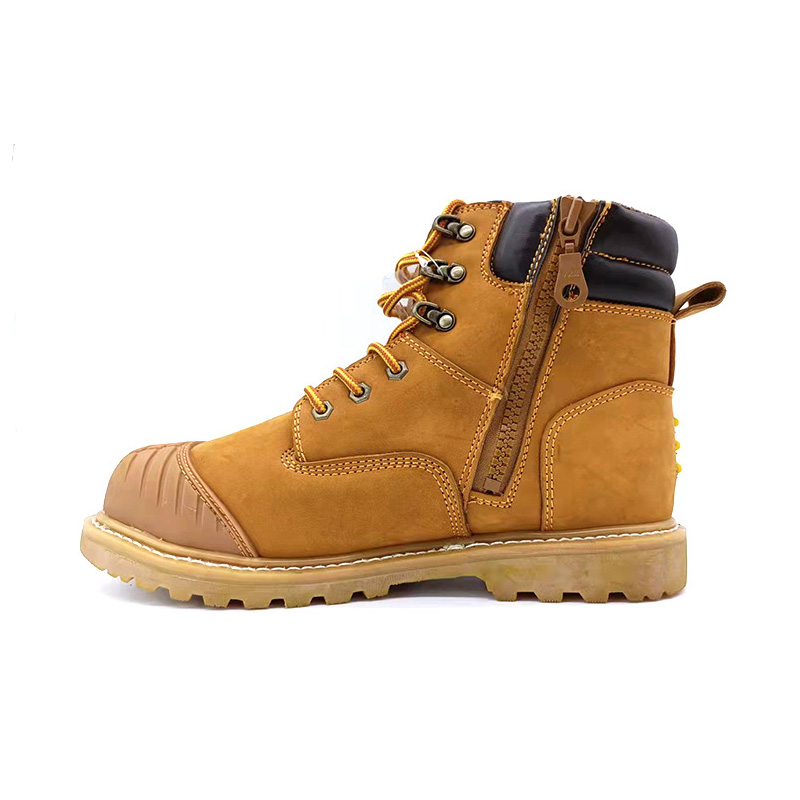During the entire wearing life of a safety shoe, the sole must undergo constant flexing without cracking or breaking. Anbang Safety Shoes introduces you to the test methods and equipment used to evaluate the flex crack resistance of shoe soles.
Due to the strain created by the flexing action of the foot, the sole may wear and crack or break. Cracks or fractures can also occur due to sharp edges nicking and piercing, and will gradually become cracks under continuous flexing. Extreme temperatures (especially sub-zero) and contamination (such as motor oil) can also accelerate shoe sole cracking. Therefore, it is very important to test the resistance to flex cracking of the sole. There are many test methods to choose from, so it may be difficult to choose the correct method. This article describes the 3 main flexural testing methods for rubber and plastic soles, their applications, and the equipment SATRA provides to perform these tests.
Using the Bennewart method
Testing Safety Shoes Ross Flex Test For smooth and sole designs with little or no tread pattern, the Ross Flex Test Machine (SATRA TM60) can be used. Generally, three test pieces measuring 150 mm x 25 mm are removed from the shoe, with the longer edge parallel to the heel seat. A notch was made in the sample using a chisel with a 2 mm edge, and the sample was placed in the flexure machine so that the notch was directly over the flexure mandrel. By measuring the incision before and after the test, the increase in incision can be calculated. The test is typically run for 150,000 cycles at a temperature of -5°C. This can help create a measurable increase in incision within a reasonable time frame. The exception is testing thermoplastic rubber at +20°C, as this material performs better at lower temperatures. The SATRA Ross flexure tester (STM 141) can accommodate 12 specimens simultaneously. The machine deflects the sample at a standard speed of 60 deflections per minute. However, machines that provide 100 deflections per minute can be used to perform the ASTM version of this test. In addition to standard machines, lower and higher temperature equipment is also available. Thus the temperature range is from ambient temperature to -20°C and from ambient temperature to +40°C.
SATRA Ross Flexure Tester (STM 141) Bata Band Test If the sole contains large splints or complex designs integrating different materials, then SATRA’s method of testing flex crack resistance is the Bata Band Tester. This is a generally accepted test that produces repeatable results related to actual wear. Glue the full sole front (minus the heel but still contain any cavity filler or midsole material) to the canvas straps. This part is driven by driven spindles of different diameters, so that the sole is cyclically and repeatedly deflected as the belt is driven onto the spindle. The slave mandrel is typically 90mm in diameter, but can be varied to 60mm or 120mm to increase or decrease the degree of deflection. Unlike the Ross flex test, the sole does not have to be cut. The test was run for 50,000 cycles with continuous visual evaluation during the run. Record the length and depth of any cracks. This test is generally performed at room temperature, but at SATRA, soles can be tested at temperatures as low as -15°C. The Bata belt flexometer (STM 459) comes standard with three replaceable driven mandrels in sizes 60mm, 90mm and 120mm, rotating at a speed of 90 deflections per minute on the smaller mandrels. A lower temperature version of the machine is also available to perform tests at temperatures as low as -20°C.
Bennewart testing Like the old standard, the new standard for safety shoes (EN ISO 20345-1) requires the use of a Bennewart machine to test soles. More testers prefer the Bata strap test method, which tests the entire front of the sole. The insole is an important part of the sample, and a cut is made at the nominal deflection line using a chisel similar to Ross’s. The sole clamps the ends, and the rollers push the insole to flex the sole 90 degrees. The degree of incision increase was measured after 30,000 cycles of operation at room temperature. If desired, this test can be performed at SATRA at sub-zero degrees. This is a demanding test for durable footwear with strong soles. For casual, fashion, and everyday wear, the test is considered too strict, especially when the soles are thick. SATRA’s Rennewart Full Sole Flexure Tester is designed to ensure a balanced force and therefore requires less force to perform the test, resulting in smoother running results. The instrument clip has high rigidity and operates strictly according to the standard. An adapted version of the Bennewart tester, using spring-action clips, does not perform this test as standard. However, a cryogenic version of this instrument is available to perform tests in temperatures as low as -20°C. Cutting jigs equipped with chisels are available to help accurately cut safety shoe soles.





